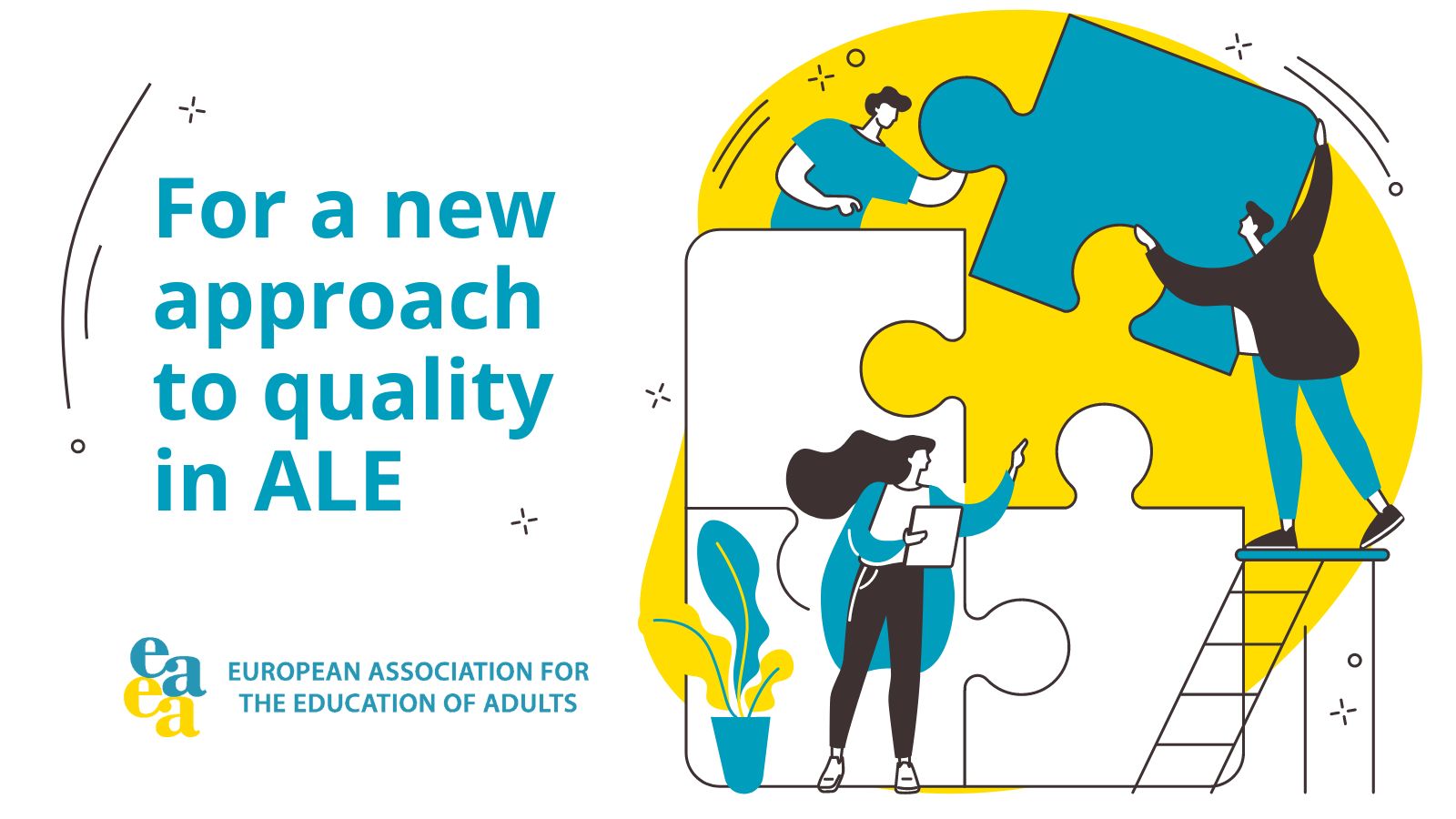Read the full paper: EAEA calls for a new approach to quality in adult learning and education (pdf)
With the (possible) introduction or increase of Individual Learning Accounts (ILAs), the question of quality assurance has become very relevant again in adult learning and education. Quality can be seen from very diverse points of view: it can concern accreditation (either for institutions or programmes), it can concern the quality management systems (ISO and other norm systems, etc.), and it can concern the training and development of teachers and trainers.
In a recent meeting of the Quality Working Group and other EAEA members, the participants highlighted:
- In some countries, there is an attempt to transfer quality frameworks or systems of other sectors (mainly CVET and Higher Education) for ALE. EAEA members are concerned that this does not work for ALE and puts small organisations in particular at a disadvantage due to the high administrative burden and often high costs of quality certification. Sometimes, quality assurance is provided for formal ALE institutions but not for non-formal ALE.
- In some cases, quality measures are meant to ‘clean the market’. By evaluating quality through very technical criteria, small organisations have difficulties complying with them although they do excellent work with the learners.
EAEA has a number of suggestions and recommendations that should be taken into account so that learners can benefit from high-quality offers in non-formal ALE through their Individual Learning Accounts:
- Quality assurance should be ethical, humanistic and holistic.
- Quality assurance should take the specificities of the ALE sector into account. Small organisations can provide high-quality learning programmes. Self-assessment can be very helpful in these cases.
- Particular attention should be paid to staff development, especially teachers and trainers.
- In order to manage quality assurance in ALE, ministries are encouraged to set up guidance and information for institutions, ideally quality advisers who can work with organisations. It is also recommended to set up (online) information and tools that will support anyone working in this area.
- Quality indicators need to be chosen carefully. A too-simple indicator might not demonstrate the full quality and impact of the programme.
EAEA recommends a bundle of indicators that take different aspects (esp. the learner’s) into account:
- Quality cannot be seen as separate from its environment. Infrastructure for high-quality provision needs to be set up so that ALE organisations can do their best. This concerns, for example, the professional development of educators and other ALE staff, guidance and counselling, and a system for the validation of prior learning. Quality for the learner can only be achieved in an enabling context.
- ALE organisations should make sure that the learner is involved in the design of their learning programme as much as possible.
- Transparency about quality criteria is necessary for learners and organisations.
Text: EAEA

